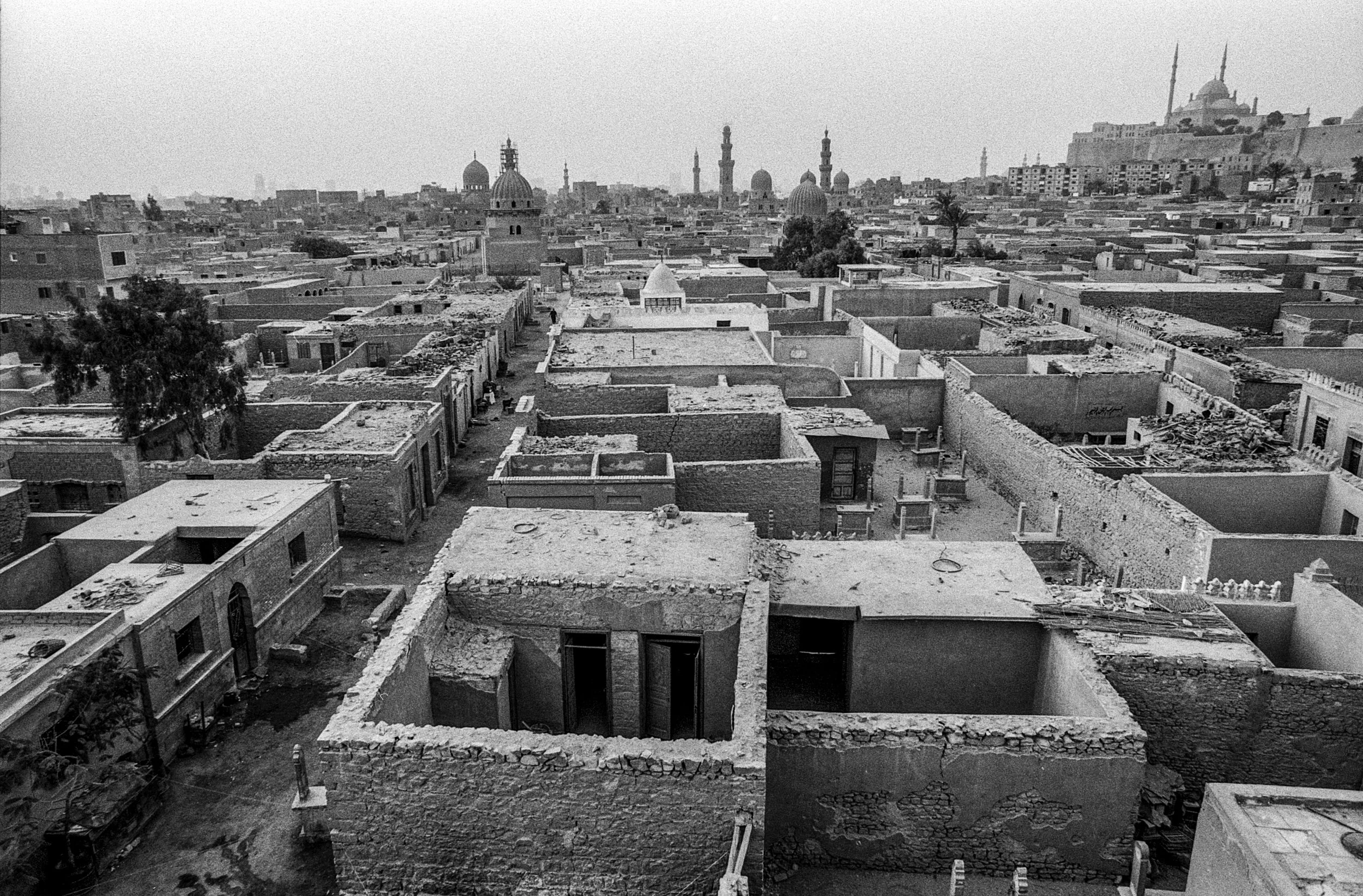Alive & Dead
November 16, 2023 • Written by Julie Winokur • Photographs by Ed Kashi
A glass blowing factory located inside a mausoleum exports its products all over the world.
Thirty years ago, Ed Kashi and I did our first story together on Cairo’s City of the Dead, a sprawling cemetery which had become home to over half-a-million living people. Ed had just photographed his second assignment for National Geographic and I was a freelance writer contributing to local and national publications. At the time, we were infinitely curious, hungry to explore, and newly in love. We didn’t have an assignment so we used our own money to spend three weeks in this thriving necropolis. The residents were mostly rural migrants and extended families that occupied the fringe of urban overcrowding. Mausoleums had been converted into businesses and caretaker shacks had grown to house large extended families. In the meantime, Egyptian families still buried their loved ones here, blurring the boundary between life and death, the ancient past and the chaotic present.
Here, the spirit world cohabited with the living, dust and bones alongside beating hearts. Our passion was ignited.
As soon as Ed and I arrived we met Medhat Hamed, a 17-year-old with competent English and intense determination. He glued himself to us and became our guide, our ears, our ambassador. We wandered the dirt roads, drank bottomless cups of tea in family homes, and explored an underground burial chamber where shrouded bodies lay tranquil on the dirt floor. It all felt copacetic, as though the dead accepted our presence in exchange for not being forced from the circle of life. While we found the whole situation captivating, I am sure the residents of El-arafa, as it is called in Egypt, found us equally exotic. We were two aliens, deposited from another world to a place that time forgot.
We stayed at a small, basic hotel across the street from the fancy Intercontinental Semiramis, which a terrorist attacked during our stay, killing three tourists. At the time there were several attacks on foreigners and tourism had declined to a trickle. Ed and I had been to the hotel the night before for drinks, and I remember thinking that fate had other plans for us and that life was too unpredictable to let caution dictate. We were on a singular path that would protect us as long as we stayed true to our own compass.
Ed and I were dating at the time, so I wore a ring on my wedding finger and we claimed to be married to avoid offending anyone in this conservative society. The women in one house asked why I wore silver instead of gold bangles, and how come I didn’t have a child yet. When I shrugged my shoulders, they told me I needed a new husband. If fate was trying to challenge me at that moment, I am glad I didn’t heed the warning. Our time in City of the Dead launched us on a path to do in-depth storytelling through a humanist lens and to immerse ourselves in the lives of people whose struggles keep us humble. Now celebrating the 21st anniversary of Talking Eyes Media, we have worked hard to stay that course throughout this incredible journey.
Writer Julie Winokur (right) breaks out some moves in a hair salon in City of the Dead.
This week, Ed is exhibiting his photographs from City of the Dead in Cairo at Photopia (November 19-December 20). Since we visited 30 years ago, al-Qarafa has made its way onto travel itineraries and even Tripadvisor features several private tours. The cemetery made headline news this year when the Egyptian government began bulldozing portions to make way for a new highway to relieve congestion. In a cruel irony, the highway is named the “Passage of Paradise.” Through social media, Medhat reemerged and he now runs an NGO helping women and youth in City of the Dead find employment.
When I pulled out the article I wrote in 1993 for Culturefront magazine, it was as though I was reading someone else’s story. Three decades is a literal lifetime, and it read with the freshness of opening a vacuum sealed container. The breath it released brought the writing back to life and rekindled moments I had completely forgotten. I also heard the foundation of my voice in those resuscitated words, and although the story seemed like someone else’s, I could hear the rhythm of the language and the depth of observation and intellectual curiosity that felt familiar. I recognized myself between the lines.









